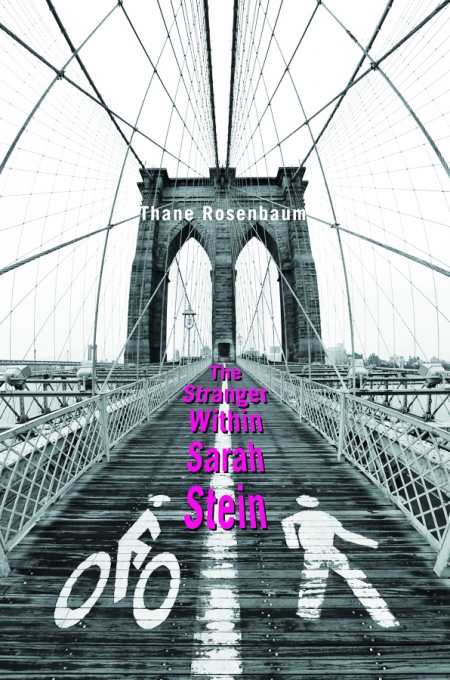The Stranger Within Sarah Stein
- 2012 INDIES Finalist
- Finalist, Young Adult Fiction (Children's)
“It is a terrible thing when a child is hidden,” explains Sarah Stein’s grandmother, a Holocaust survivor whose parents placed her in a convent, “it is dangerous to become two people…and to remain in hiding too long…I survived as a Christian, but my parents and brothers died as Jews.”
Sarah’s grandmother shares her story because Sarah has reacted to her parents’ divorce by acting out the psychological splitting that many children feel when suddenly confronted with two “homes.” As she bicycles from her mother’s new place in Brooklyn to the TriBeCa loft that now houses only her and her father, she transforms herself into two separate Sarahs, one for each parent. The “Brooklyn Sarah” is more organized, better dressed, and “more popular,” although she “laugh[s] less” and is “really dumb.” In contrast, she remembers, “my father’s sadness brought out the rebel girl in me,” sometimes disrespectful, but academically excellent.
When Sarah crashes her bicycle into a homeless man’s shopping cart on the Brooklyn Bridge, the indifference of passersby is countered by his friendliness: the man, Clarence, calls her “Chocolate Girl” because her mother runs a chocolate shop, and he repairs her badly damaged bicycle. His home, a magic “portal” in the middle of the bridge that only he and Sarah can see becomes Sarah’s refuge, a safe space in which to store her persona-changing wardrobe and a “looking-glass” in which to see her own reflection. A chance encounter with a New York City firefighter leads her more deeply into Clarence’s story; she wanders, Alice-like, through a confusing maze of half-connections and chance discoveries that articulate the happenstance of human relationships in the vast diversity of a city such as New York.
Books that blame mothers for divorce are less frequent than those in which fathers leave, and Thane Rosenbaum is to be commended for choosing this unusual path. Sarah’s mother dissolves her marriage for reasons that seem trite—she yearns for membership in New York’s most socially elite circles—whereas Sarah’s father is the parent who truly “sees” her. Mirror images stare back at each other throughout the story in intriguing ways: Sarah’s friends are twins who assess and support her dual identities, and the plot doubles back on itself to create a rich, multi-layered reflection about the meaning of family, friendships, legacies, and love.
Reviewed by
Elizabeth Breau
Disclosure: This article is not an endorsement, but a review. The publisher of this book provided free copies of the book and paid a small fee to have their book reviewed by a professional reviewer. Foreword Reviews and Clarion Reviews make no guarantee that the publisher will receive a positive review. Foreword Magazine, Inc. is disclosing this in accordance with the Federal Trade Commission’s 16 CFR, Part 255.

